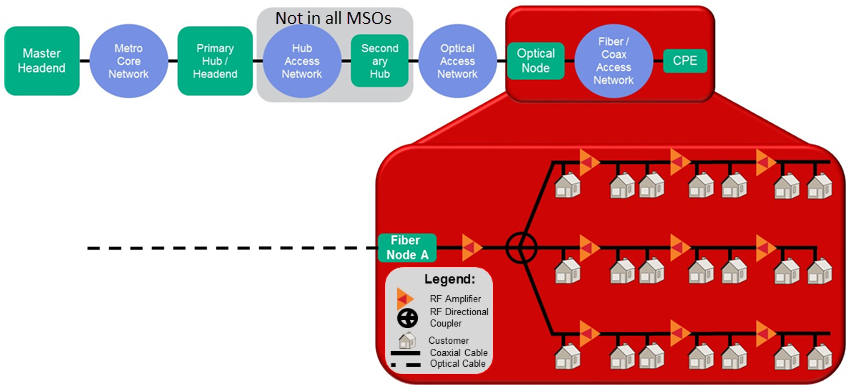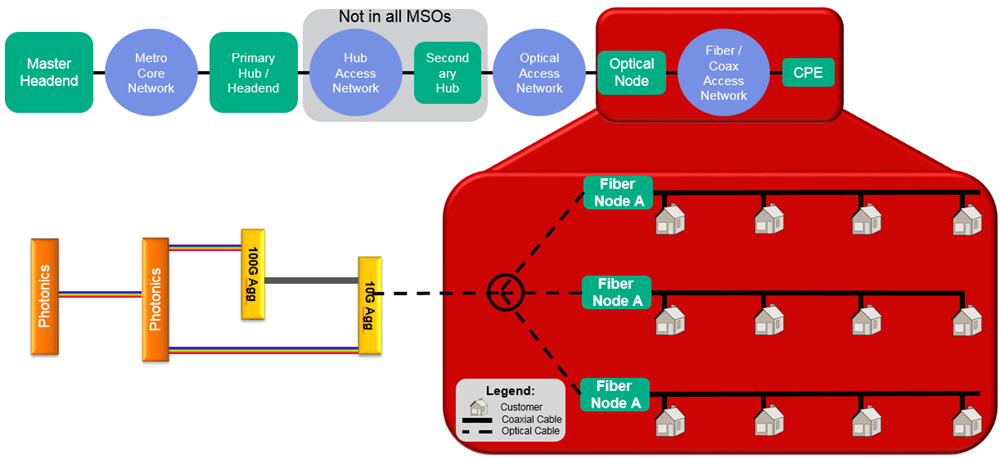Is it Time to Speed up Packet Delay?
As broadband connections continue to get faster and faster, one might think the days of slow Internet were a distant image in the rearview mirror. Well, at least that’s the perception of many high-speed connection users. Truth be told, when it comes to packet delay, nothing could be further from the truth. Bandwidth is the amount of data that can be transferred in a given amount of time, typically measured in megabits-per-second (Mbps) or gigabits-per-second (Gbps). But having the ability to transfer more bits per second doesn’t equate to less packet delay. Packet delay can be an issue with all connections and networks.
Over the past 20 years, one of the most common approaches for the cable operator was to deliver broadband services with Hybrid Fiber Coax (HFC) networks. For most, the average HFC fiber node is anywhere from 12 to 30 miles from a primary or secondary hub, with coaxial amplifiers every 1,000 to 2,000 feet thereafter.

For multiple systems operators (MSOs), packet delay affects a large mix of traffic types, including voice, video, and data.
So, what exactly is packet delay?
Packet delay is the time delay between when a packet of data goes from one place to another, also referred to as latency. In communication networks, there are two types of packet delay, one-way and round-trip. There are several factors that introduce network latency, including:
- Propagation Delay – the time it takes a packet to travel from the sender to the receiver, and is typically dictated by distance.
- Transmission Delay – medium (copper, wireless, optical fiber) delay, that varies depending on the medium and packet size, as larger packets take longer to receive versus shorter packets typically due to buffering. Addition delay can be introduced with equipment when the packet needs to be boosted (amplifiers, etc.).
- Processing Delay – router and switch processing delay for reading (destination, outbound link, etc.) or changes in packet headers, encapsulations, compression, encoding, encryption, etc.
- Queueing Delay – packets can become delayed waiting for its turn when the router queue (first-come-first-serve) is busy with other traffic.
What contributes to packet delay?
Pretty much everything contributes to packet delay, including other packets. With more packets flowing in the network, the possibility of network congestion becomes even greater to you and others, resulting in increased packet delay.
Typically, wired connections have the lowest latency, while air, including satellite and wireless, have higher latency. Bandwidth has a different effect, when it comes to mediums, with air having lower bandwidth and fixed (wired) mediums having higher bandwidths. One main reason for this is because captive or fixed mediums have greater control mechanisms and mediums like air do not – you really can’t change the fundamental laws of physics. For example, ever watch a video satellite feed on the news, with the news commentator apologizing for the delay or disruption of the feed? With fixed or wired systems, that rarely happens, when properly engineered.
How does packet delay affect you?
For users, packet delay can manifest into many concerns, most often as Quality of Experience (QoE). For example, having an audio or video chat over the Internet, something commonly done these days, with high-latency connection, would put each other out of sync – meaning each person would have to wait for the other to finish speaking or they would speak over each other.
Online gamers know latency all too well, although called by a different name – lag! Lag is a noticeable delay between player action and the video game server. For example, in a first-person shooter game one player could be shooting where they see the opponent, but due to excessive lag the opponent has since moved. In some cases, gamers use packet delay to their advantage by installing ‘lag switches’ or modified their gaming consoles, to add lag when desired. This practice was so rampant during the late 2000’s that 600,000 to 1,000,000 consoles were locked out, making them online useless.
How can cable operators minimize the effect of packet delay?
To minimize packet delay cable operators are pushing fiber deeper into the network and reducing the high cost of coaxial cable.

The Fiber Deep architecture removes active coaxial amplifiers, reducing the serving group size, and places fiber nodes closer to the customer. Removing coaxial amplifiers will improve packet delay, as there will be no amplifiers in the forward and reverse data path.
With fiber nodes closer to the customer, customer serving group sizes can be reduced, increasing bandwidth and reducing packet congestion concerns, allowing customers to migrate to the latest data over cable service interface specification (DOCSIS). With a predominately fiber-based network, packet switching and aggregation can be deployed to manage and prioritize packet flows. Finally, advanced coherent technology can be used to optimize limited and scarce fiber resources.
Ciena’s modular packet-optical architecture, along with its multiple award-winning coherent optical processor technology and Liquid Spectrum, are just a few advanced optical technologies that transform static optical networks into dynamic, agile, and flexible assets.
So, rev your engines, Ciena can satisfy your Need for Speed – without delay.








